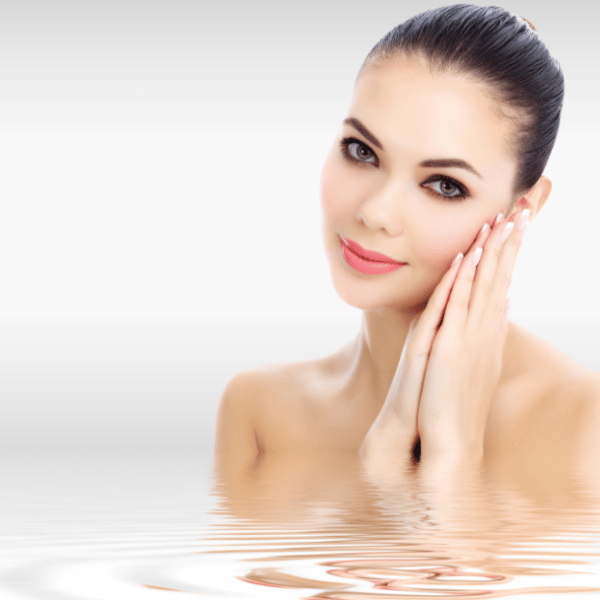At Smart and beauty we explain it to you: it is a botulinum toxin that affects the nerves (neurotoxin) produced by a bacteria called Clostridium botulinum (responsible for a disease called botulism). Botulinum toxin prevents nerve signals from being transmitted from the nerves to the muscles, producing temporary muscle paralysis without damaging the nervous structures. It is known for its use in aesthetics, and is currently also used to improve the symptoms of different diseases such as facial paralysis and at the same time helps to improve the quality of life.
What are the benefits of botox?
* Improves the appearance of the face.
* Prevents the formation of wrinkles.
* Helps people’s self-esteem.
* Reduces excessive sweat.
* Relief from chronic migraine.
* Improves some health pathologies.

Is botox healthy for our health?
Yes, our Smart and beauty team, in parallel, we use it not only to beautify people but also medicinally. Botox injections are also used to relieve the symptoms of some diseases. It is not a cure. Some examples of conditions that can be treated with Botox injections include the following:
* Spasms in the neck. In this painful condition, the neck muscles contract involuntarily, causing the head to rotate or shift into an uncomfortable position. This condition is also called cervical dystonia.Botox injections use a toxin to temporarily prevent the movement of a muscle. These injections are often used to treat neck spasms,
* Other muscle spasms. Cerebral palsy and other nervous system conditions can cause the limbs to turn toward the center of the body. Muscle spasms can also cause eye twitches.
* Lazy eye Amblyopia. The most common cause for lazy eye is an imbalance in the muscles used to move the eyes. It is also known as crossed eyes or misaligned eyes.


What is it for?
Currently we use it for the aesthetic part and also for health.
Our Smart and beauty team applies it to the face, helping to soften wrinkles on the face, the muscles that cause wrinkles on the forehead and around the eyes relax and those expression lines are reduced. The injections have an effect that lasts several months, after which the activity of the muscle returns and therefore the wrinkles reappear. That is why we always recommend that our patients touch up between 4 and 6 months.
Is it used as an antidepressant?
At Smart and beauty we verify that it is totally true and different medical studies expose a positive influence of Botox on mood and also highlight the premise that facial muscles are not only capable of expressing without the need to pronounce a single word ( as when we frown or purse our lips to express dissatisfaction or annoyance). By feeling and looking physically good, a person will demonstrate greater security, smile and internal well-being.

* Sweating. Botox may be used for a condition in which people sweat a lot even when they don’t feel hot or do anything to sweat. This is called excessive sweating or hyperhidrosis. The application of botulinum toxin or Botox has proven useful in hyperhidrosis of the armpits and palms. Its mechanism of action consists of blocking nerve transmission at the neuromuscular junction, ceasing sweat production.
* Migraine. Botox injections can help reduce how often you have a migraine. This treatment is mainly used for people who have headaches 15 days a month or more. When you have severe headaches that often, the condition is called chronic migraine. Treatment is necessary approximately every three months to maintain benefit.
* Bladder problems. Botox injections can also help reduce urinary incontinence caused by an overactive bladder.
* Relieves knee pain. A botulinum toxin injection combined with physical therapy shows effectiveness in treating patellofemoral overuse pain syndrome, which causes inflammation and pain in the knee in runners and cyclists.
* Eye pulsations. Botulinum toxin relieves contractures of the muscles around the eyes and prevents annoying pulsations.
* Arthritis. Although more clinical trials are still required, botulinum toxin may also be a promising alternative in this pathology, by reducing pain and improving function.
* Muscle contractures. Those caused by some neurological disorders such as cerebral palsy can be treated with botox.
* Laryngeal dysphonia. It is injected into the muscles around the vocal cords to weaken the muscles and improve voice quality.
How often is it recommended to get Botox done?
Our Smart and Beauty staff recommends applying it every 4 or 6 months, in order to always keep the skin smooth and for the patient to look more natural in case of aesthetics. If it were for health use, at the time of the consultation it will recommend the required number of sections.


Smart and Beauty Miami in Instagram